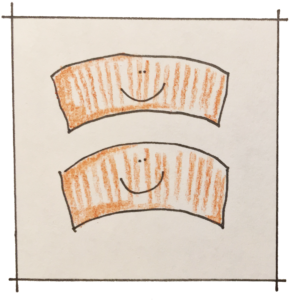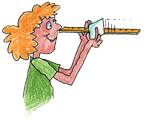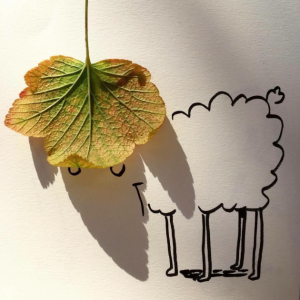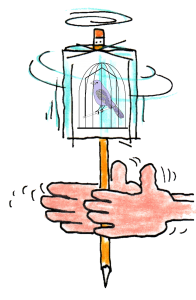One of my favorite science museums in the world is the Exploratorium in San Francisco.
They have been very generous and posted what they call snacks that feature simpler ways of creating many of the displays you’ll find at their fabulous museum.
I would like to share a few with you that focus on the topic of light.
Use sleeves from take out coffee OR scraps of paper to make an optical illusion.
Stare at an image and when you look away you’ll see something very different.
Create an illusion of a pumpkin and then use an image you choose to create a new illusion.
Teaching light? Sound? Heat? Five senses?
Here are a few poems from familiar poets you might consider sharing with your students as you teach science.
I chose familiar poets hoping you could find them in your school or local library if you don’t have the poetry book on your shelf.
Got two sharp pencils? That’s all this quick science activity requires.
A great option when you want to introduce perspective and how we see objects, have just a few minutes of class time, or would like to add an activity to your sub folder.
I’ve included resources for these additional options. Use clever images to show forced perspective. Start a discussion about perspective and seeing from another person’s viewpoint. Talk about adapting to vision loss in one eye.
If you liked Where’s Your Blind Spot and Is There a Hole in my Hand? here’s another quick activity that demonstrates how our eyes can fool us.
In Where’s Your Blind Spot, students learned about spots in their retinas that don’t sense light and information is not sent to the brain.
What if you use two eyes to look across a room but one eye is looking through a cardboard tube?
How does the tube change what you see?
Are you teaching light or optics in your physics class or point of view and showing respect towards others during a class discussion? This activity may be just what you need!
What does it mean to have a blind spot?
Why is it important to be aware of your own blind spots?
This activity easily extends from primary grades to high school…
Activities, with a few suggestions, to add to your resources for teaching light. I presented this information at a workshop at the OSTAstate conference. The Evidence Statement for NGSS 1-PS4-2 suggests observations in a dark room, a pinhole box, or a video of a cave explorer. Objects in darkness can be seen only when illuminated. I don’t have those resources available so I cut a small hole in one end of a box and asked a child to look through the hole and tell me what is seen in the box. He can’t see anything because there’s so little light in the box …
source: tinyurl.com/shadowillustrations Artist Vincent Bal turns the shadows of everyday objects into ingenious illustrations, Consider adding this resource to your light unit or challenging your students who enjoy drawing to create a few shadow illustrations of their own to share with classmates. This could be an activity for pairs or teams of students. You just need a few common objects and a flashlight! This suggestion came from Ian Byrd. He sends me an email every Friday with resources for gifted students. Most activities would work with the amazing variety of students we have in our classrooms. You might check out Byrdseed: …
Use an optical illusion to extend your light or five senses unit. Print in color or have students color the images. Tape the paper to a pencil or straw, staple, and spin! Step-by-step directions and a short video make it easy to create a spinning illusion your students will love. Kids may want to draw their own illusions to share with classmates and family members. Does it matter if you spin slowly or quickly? What if you use dark colors, bright colors, or pale colors? Will you see the illusion better if you are close, holding it at arm’s length, or far …










